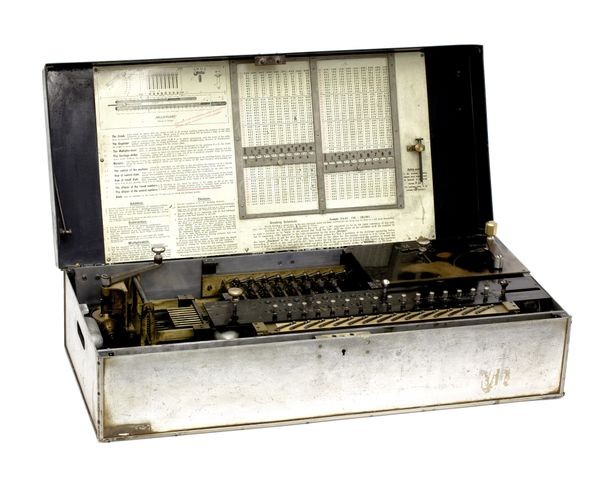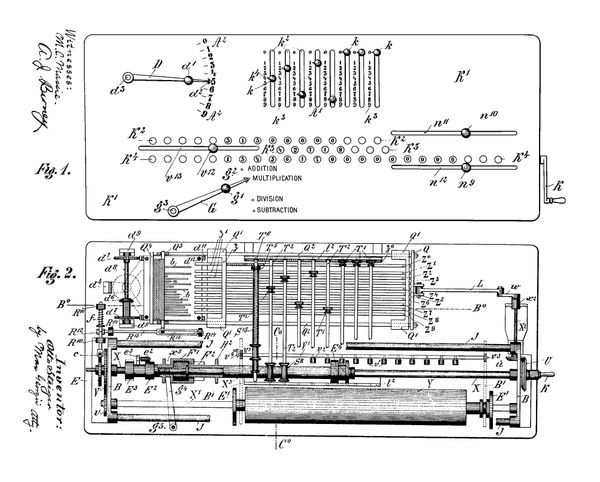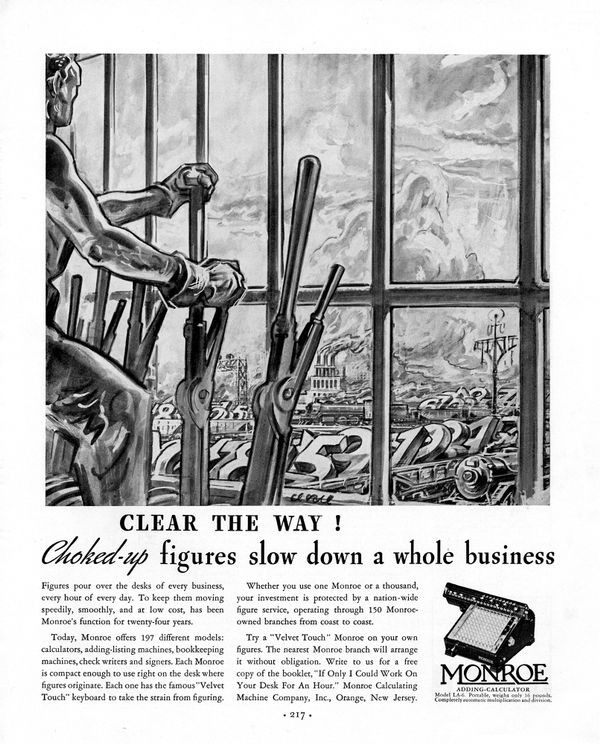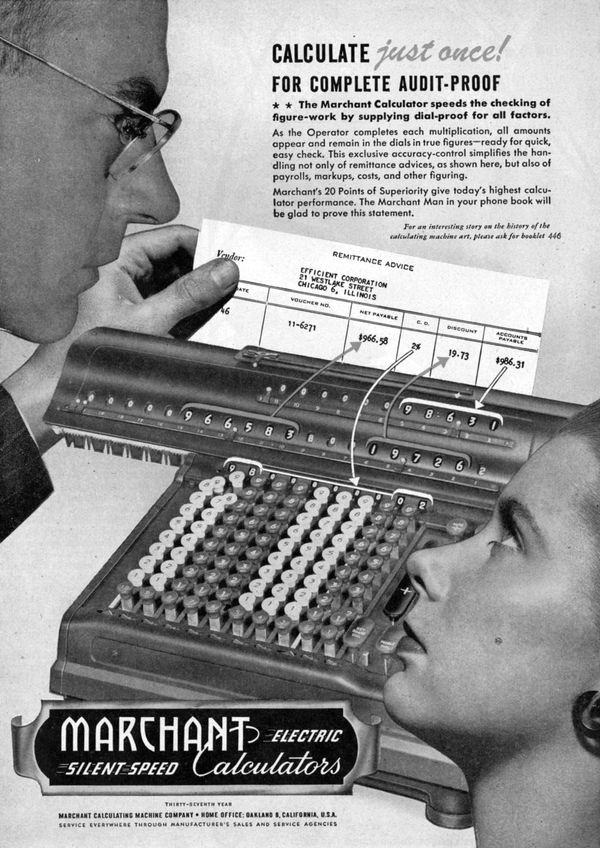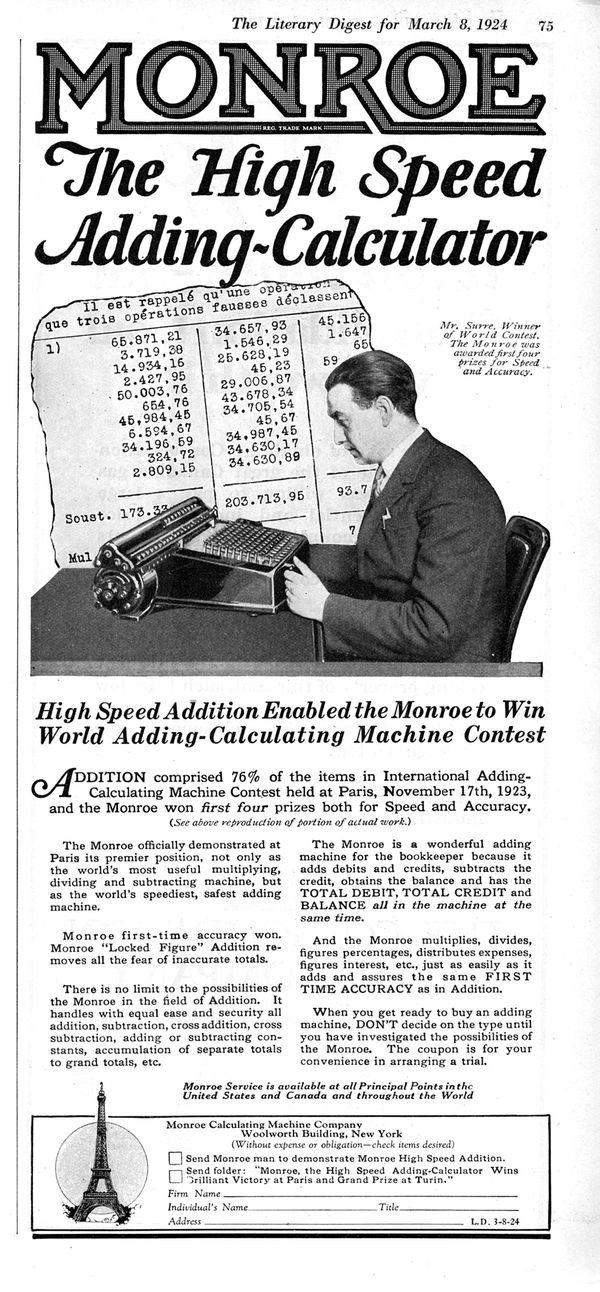Beyond the Basics: Calculators in the 20th Century
Millionaire
The 16-digit results allowed the Millionaire to be used for high-precision calculations. Starting in 1911 you could order the optional electric drive motor to make the work even easier. About 4600 were made over 40 years.
Beyond the Basics: Calculators in the 20th Century
Calculators weren’t keeping up. Business and science, engineering and commerce, factories and insurance companies all expanded rapidly in the Industrial Revolution. And all were frustrated by the limitations of the available calculators.
Frustrated customers represent a commercial opportunity. Inventors and entrepreneurs responded with rapid advances. Increasingly fast, flexible calculators enabled many of the scientific, engineering and commercial advances of the next 75 years.
The Millionaire was an important milestone in this evolution. The first “scientific calculator,” it reigned for a generation as the aristocrat of arithmetic.
The Millionaire, patented in 1892 by Swiss engineer Otto Steiger, could multiply and divide much faster than its predecessors, letting scientists, engineers and many others conduct unprecedented calculation-intensive studies—including statistical, actuarial and other analyses. It remained available until the 1930s.
Millionaire US patent drawings
The Millionaire’s mechanism contained a full multiplication table and could multiply any two numbers in one cycle. Competing calculators cycled repeatedly and were much slower. The Millionaire was expensive but attracted “power users” such as insurance companies, scientists, and engineers.
View Artifact DetailBurroughs electric calculator advertisement
As calculators became more widespread in the early 1900s, advertising targeted different customers (small businesses, large corporations, engineering firms) and reflected the general mood of the country as America moved through two world wars, the roaring 20s, the Great Depression, and the post-WWII economic and technological boom.
View Artifact DetailMonroe calculator advertisement
As calculators became more widespread in the first half of the 20th century, the tenor of advertising varied to reflect target customers (small businesses, large corporations, engineering firms) and the general mood of the country as it moved through two world wars, the Roaring 20s, the Great Depression, and the post-WWII economic and technological boom.
View Artifact DetailMarchant electronic calculator advertisement
As calculators became more widespread in the first half of the 20th century, the tenor of advertising varied to reflect target customers (small businesses, large corporations, engineering firms) and the general mood of the country as it moved through two world wars, the Roaring 20s, the Great Depression, and the post-WWII economic and technological boom.
View Artifact DetailMonroe calculator advertisement
As calculators became more widespread in the early 1900s, advertising targeted different customers (small businesses, large corporations, engineering firms) and reflected the general mood of the country as America moved through two world wars, the roaring 20s, the Great Depression, and the post-WWII economic and technological boom.
View Artifact DetailFriden advertisement
As calculators became more widespread in the first half of the 20th century, the tenor of advertising varied to reflect target customers (small businesses, large corporations, engineering firms) and the general mood of the country as it moved through two world wars, the Roaring 20s, the Great Depression, and the post-WWII economic and technological boom.
View Artifact Detail